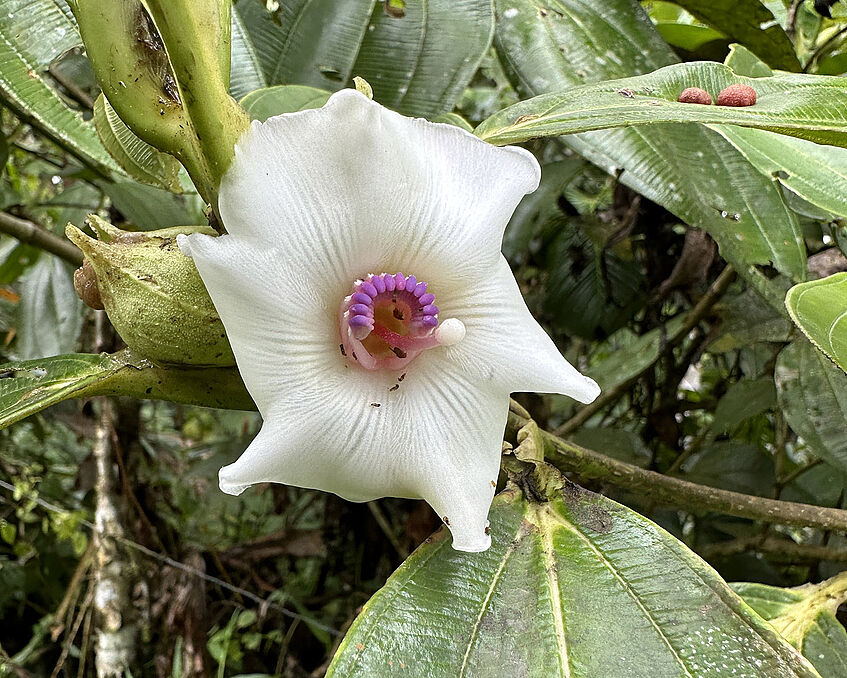Buzz-pollination in tropical Melastomataceae

Melastomataceae-Flower © Benjamin Lazarus

Melastomataceae-Flower © Benjamin Lazarus

Melastomataceae-Flower © Benjamin Lazarus

Melastomataceae-Flower © Benjamin Lazarus
In buzz-pollinated flowers, pollen can only be released from these flowers when bees apply vibrations of specific frequencies and amplitudes. Many buzz-pollinated plants (i.e., tomatoes, potatoes, kiwis) exhibit the same flower type with reflexed petals and anthers (the male reproductive organs containing the pollen) forming a cone. In the large tropical plant family Melastomataceae, however, a much larger diversity of flowers has evolved, including both flowers with anther cones as well as flowers with complex arrangements of anthers and prominent anther appendages. To date, it remains unclear whether this flower diversity represents adaptations to different bee species, and which flower traits (e.g., scent, color, pollen rewards, flower-pollinator fit, biomechanical vibration properties of flower) differentiate to specialize on different bee species.
In the research project, researchers combine approaches from pollination biology and flower evolution (Agnes Dellinger, University of Vienna) with methods from mechatronics (Ernst Csencsics, Vienna Technical University) to investigate how Melastomataceae flowers have adapted to buzz-pollinating bees. Together with Latin American colleagues, plant-pollinator-interactions are documented directly in the natural habitats of the plants in Latin America. Moreover, artificial vibration experiments with a newly developed vibration shaker table are employed.
Furthermore, flowers are investigated ultrastructurally using µ-computed tomography and through computer simulations and 3D-models. For the calibration and refinement of the shaker system, as well as for validation of the simulations, researchers make use of Melastomataceae flowers available in the Botanical Garden of the University of Vienna.
The combination of pollination biological and mechatronic approaches allows the researchers to explore both ecological interaction processes as well as principles of physics in biological structures. Since buzz-pollination occurs in approximately 10 % of flowering plants, including important crops, results are expected to be relevant both for basic research as well as applications in agronomy.
Lead partner: Agnes Dellinger, Division of Structural and functional botany, University of Vienna Botany
Funded through: FWF (Österreichischen Wissenschaftsfonds) und den ERC (European Research Council)
Duration: FWF Project 01.06.2023–31.05.2027; ERC Project 01.10.2024–30.09.2029
